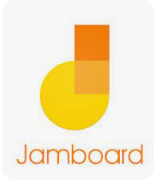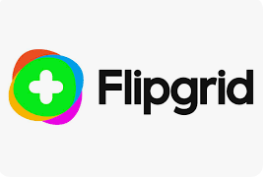Course Overview

This course is designed for adult learners enrolled in the Early Learning program at Yukon University. It provides techniques and theories to foster the development of self-esteem, self-control, and social skills in young children. Students will learn to guide young children in order to develop a healthy and positive self-concept in the child. Emphasis is guiding young children to become self-responsible, competent, independent, and cooperative. The course will take 14 weeks to complete.
Course Rational
This is a fully online course of synchronous classes. It is not possible for students to travel to Whitehorse for class on a weekly basis, necessitating the need for online learning.
The students must complete Early Learning courses for certification purposes to ensure employment at the Early Learning Centers. If the courses are not successfully completed, students may be unable to continue working in their chosen field.
In addition, a fully online course has challenges. Students often have demands from their personal life that cause them to be absent from class. Flexibility for instruction must be built into the design of courses. There must be opportunities for students to learn course material outside class time through asynchronous methods.
The Students

Photo by Andrea Piaquadio from Pexels
The students are adult learners who are currently working in an Early Learning Centre in a rural Yukon community. The majority of the students are women and have graduated from high school. All classes are in the evening after the students have completed work for the day. Most students are parents and join the class via Zoom from their homes.
A brief needs assessment was completed to determine opportunities and limitations for learners: The normative need is that all students pass the course to obtain 3 credits.
Comparative needs are that the students could have taken a different amount of courses at the time of enrollment in EL 130.
Felt needs are remote learners typically request flexibility in course delivery.
Expressed needs differ for every student. Generally speaking, all students wish to complete the course with a targeted final mark.
Future needs are EL 130 prepares students for future 200 courses in the program, notably Program Planning and Exceptional Children.
Critical incident needs would occur when Internet access fails. Depending on the outage length, a make-up class must be scheduled, or an asynchronous class may need to occur.
Course Format
The course is 14 weeks long. Synchronous classes are held in the evenings, one night a week. Each class is 3 hours long. The course is made of the following weekly lessons:
Week 1: Course Overview and Introductions
Week 2: Social and emotional development across age groups
Week 3: Attachment
Week 4: Self-identity
Week 5: Self-esteem
Week 6: Emotions and self-regulation
Week 7: Self-regulation and co-regulation
Week 8: Indirect guidance -the environment
Week 9: Indirect guidance- building a community
Week 10: Direct guidance- democracy
Week 11: Direct guidance- role of the educator
Week 12: Direct guidance- continued
Week 13: Social-Emotional Group presentations
Week 14: Tea and talk to co-construct mark for assignments
Course Tools
Yukon University uses Moodle as a platform for all online learning classes. I have taught this course in the past and I will be teaching this course in the Fall, I have chosen to build my course using Moodle. In addition, Zoom, Jamboard, Youtube, Canva, Flipgrid, and the Science of Early Childhood website will be used as teaching and learning tools.

Course Toolset
Course Content and Learning Objectives
Learning Objectives:
Upon successful completion of the course, students will be able to:
- Identify the major developmental theories as they relate to child guidance
- List a variety of developmentally appropriate approaches for guiding young children’s behaviors
- Explain the development of self-concept and characteristics of self-esteem
- Demonstrate practical, effective and flexible guidance strategies in fostering a positive and realistic self-concept and self-esteem in children
- Demonstrate strategies and techniques that promote problem-solving and foster the development of self-control, self-discipline, self-motivation and responsibility in children
- Know the diversity issues in the context of First Nation and other Canadian cultures related to child guidance, Including family, gender and ability
Content
The learning objectives will be supported by examining the following questions:
Compelling Question
- What is child guidance?
Supporting Questions
- What role does the environment play in child guidance?
- How is social and emotional learning connected to child guidance?
- What role do children, educators, and the community play in guidance strategies in early childhood?
- How is culture connected to child guidance and social and emotional learning?
Assessment Strategies
Assessments will be formative and summative to give students various ways to receive feedback.
| Assignment | Description | Assessment |
| Assignment 1: Weekly reflections | The students will reflect on one reading or video per week to determine what was significant, why and how it applies to early learning education | This is a summative assignment. The mark will be co-constructed by the student and the Instructor. |
| Assignment 2: Letter to the Editor | The students will defend a developmentally appropriate approach for guiding young children’s behaviours. | This is a formative assignment. The mark will be given by the Instructor with detailed feedback. Students will be given an opportunity to re-submit the assignment using the feedback. |
| Assignment 3: Self-Concept/Self-Esteem brochure | The students will explain the development of self-concept or characteristics of self-esteem. | This is a formative assignment. The mark will be given by the Instructor with detailed feedback. Students will be given an opportunity to re-submit the assignment using the feedback. |
| Assignment 4: Early Learning Environments | The students will identify using physical space to create a positive early learning environment. | This is a summative assignment to be marked by the Instructor. |
| Assignment 5: Group Assignment Social and Emotional Curriculum | For this assignment, the class will be divided into groups. Groups will be assigned one social and emotional curriculum to review, study and present to the rest of the class.
|
This is a summative assignment with the mark being pass/fail as the process used to create the presentation is the focus. |
Considerations for Common Concerns
Connectivity issues are a common concern as only one fiber optic line for the Yukon exists. Connectivity can be randomly lost, and reconnection can be slow. One community can sometimes lose connectivity, and an outage cannot affect others. This can cause students to be unable to join the class while others can attend.
The students have worked all day and have families to care for. Often students must leave the Zoom class to care for their children. In addition, community events such as a funeral can make class attendance difficult.
Students are often motivated to learn and wish to attend class. At times, events outside their control can make attendance in class difficult. Flexibility must be built into course delivery.
Link to ADDIE template
https://docs.google.com/document/d/1szNax001Bl6yWxS_-MIUTgDPHMX5vhPbfgbRkxv50QI/edit?usp=sharing







Hi Laura! This looks great! I love how you involve your students in the assessment process. I feel like this is absolutely necessary and valuable especially in adult education. Giving adults a say and a voice in their education is so important. I recently taught an adult ESL class for Carlton Trail College and it was so interesting for me to compare adult learnings to youth learners. Adult learning is certainly different. Flexibility to definitely necessary for adults and I’m sure they really appreciate you as a teacher having understanding in flexibility. I can’t wait to learn more about your course module!
Thanks Megan! I love it when an assignment can be pass/fail. My way for determining this is if the PROCESS (what the students learn from completing the assignment) is more important than the PRODUCT (what ever it is that is created by completing the assignment), then the assignment is a pass/fail. For example, I instructed a class on the process of teaching writing. The students had to complete a 5 part assignment based on assessing writing by a Grade 6 student. It was pass/fail because the process of competing the 5 steps was where the learning was; not the final result of their assessments. The assignments were easy to mark but I gave lots of feedback which took time. It would be interesting to see how that kind of assessment could work in a school.
Hello Laura, After going through your blog post I adore the way you include your pupils in the evaluation procedure. This, in my opinion, is very important and beneficial for adult education. It is crucial to give adults a say and a voice in their education. It was fascinating for me to contrast the learning styles of adult and young learners when I recently taught an adult ESL course for Carlton Trail College. Adult education is undoubtedly unique. Adults absolutely need flexibility, and I’m sure they greatly value your understanding of flexibility as a teacher. The quality and applicability of the course material was one of the components of the Early Learning programme that most struck me. The curriculum covered a wide range of subjects, including theories of child development and useful methods for designing stimulating learning settings. I’m eager to find out more information about your course module.
Laura, this is such an important topic to teach in the classroom at all ages, and to be able to teach young adults these skills will help them in future endeavors. I am curious as to why you chose synchronous lessons? I like that you have allowed for flexibility within the course to further aid these young learners. Additionally, I thought it was fantastic that you give feedback throughout as sometimes learners do not know how they are doing until it is too late. The topics that are chosen are intriguing to me. I look forward to following your journey as you create this module!
Thanks for sharing!
Hi Britney, thanks for your post! It is a long story why the course is synchronous and how I ended up being an Instructor. The short version is it was develped for rural students who could not travel to Whitehorse for classes yet needed to take the classes. This is the best way for students to have “face to face” time with an Instructor. When I started I was only teaching in 2 communities, would travel back and forth. The class without me would remote into the other community. The model worked so well it was extended into other communities and is fully synchronous. It has taken time, but we are a a community of learners, despite the barrier of the computer screen.
Hi Laura!
Happy to have another class with you 😊.
Wow! Your course looks super interesting! I am not too familiar with planning content for adults learners but it seems that you have a very well laid-out course outline and your objectives are clear. It is interesting that even though your course is geared to adult learners you still mention issues with “Attendance”. I also found it interesting that no matter the age of learners flexibility seems to be a must within the teaching profession. Connectivity issues are always a possibility when engaging with the online learning process.
I am looking forward to seeing the finished product 😊.
Happy planning!